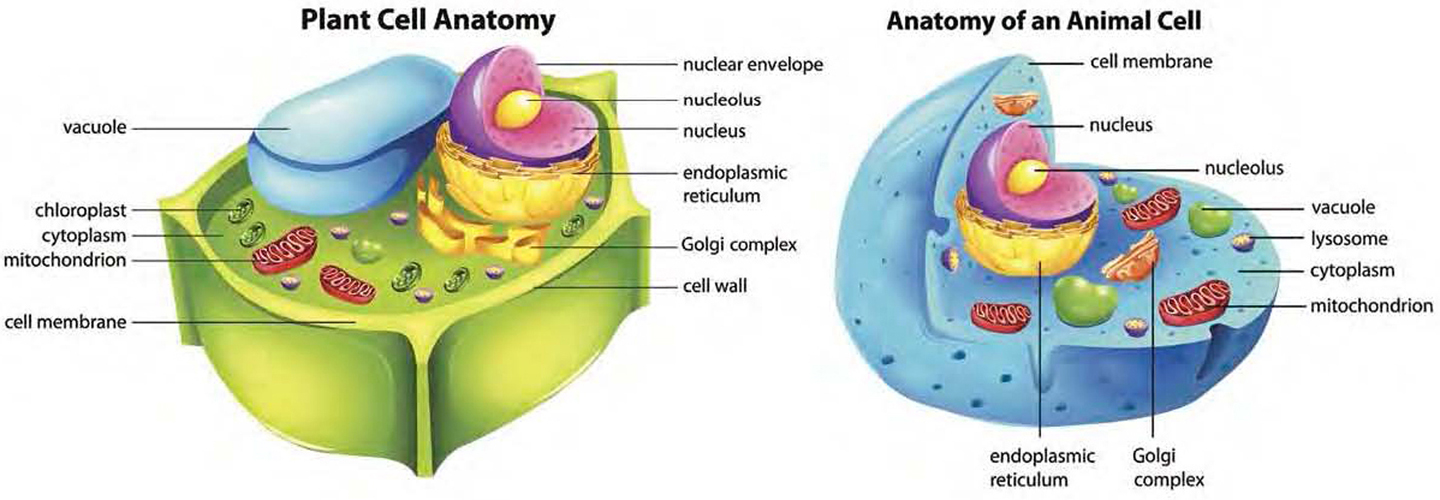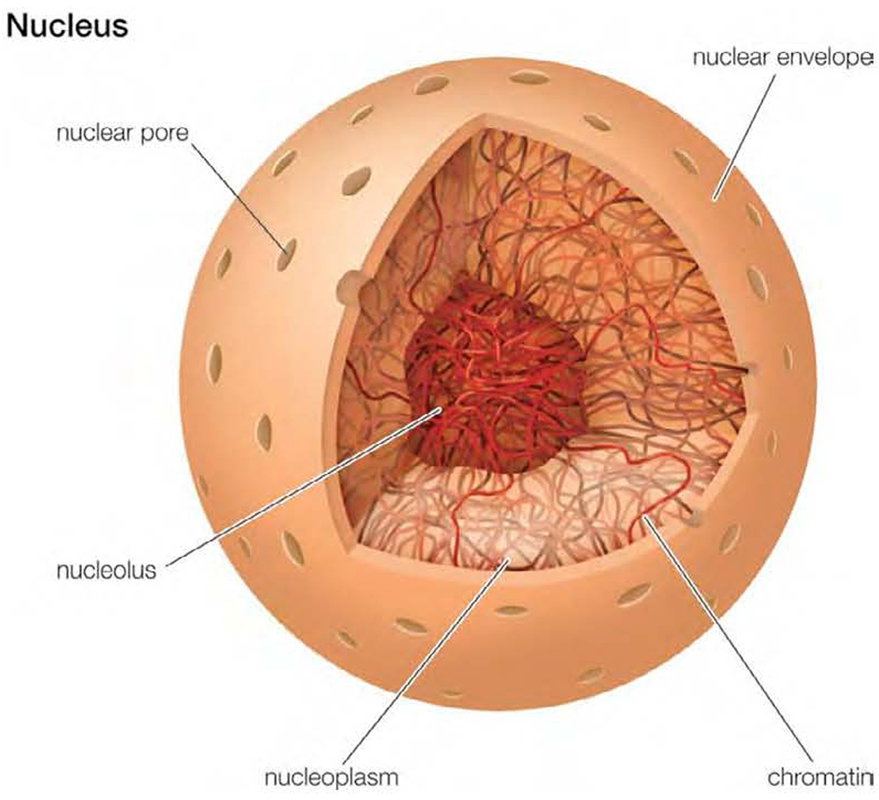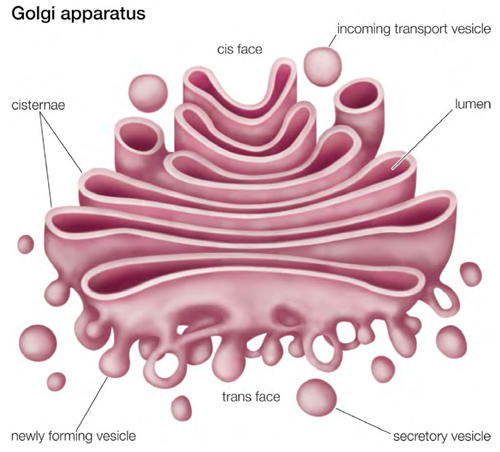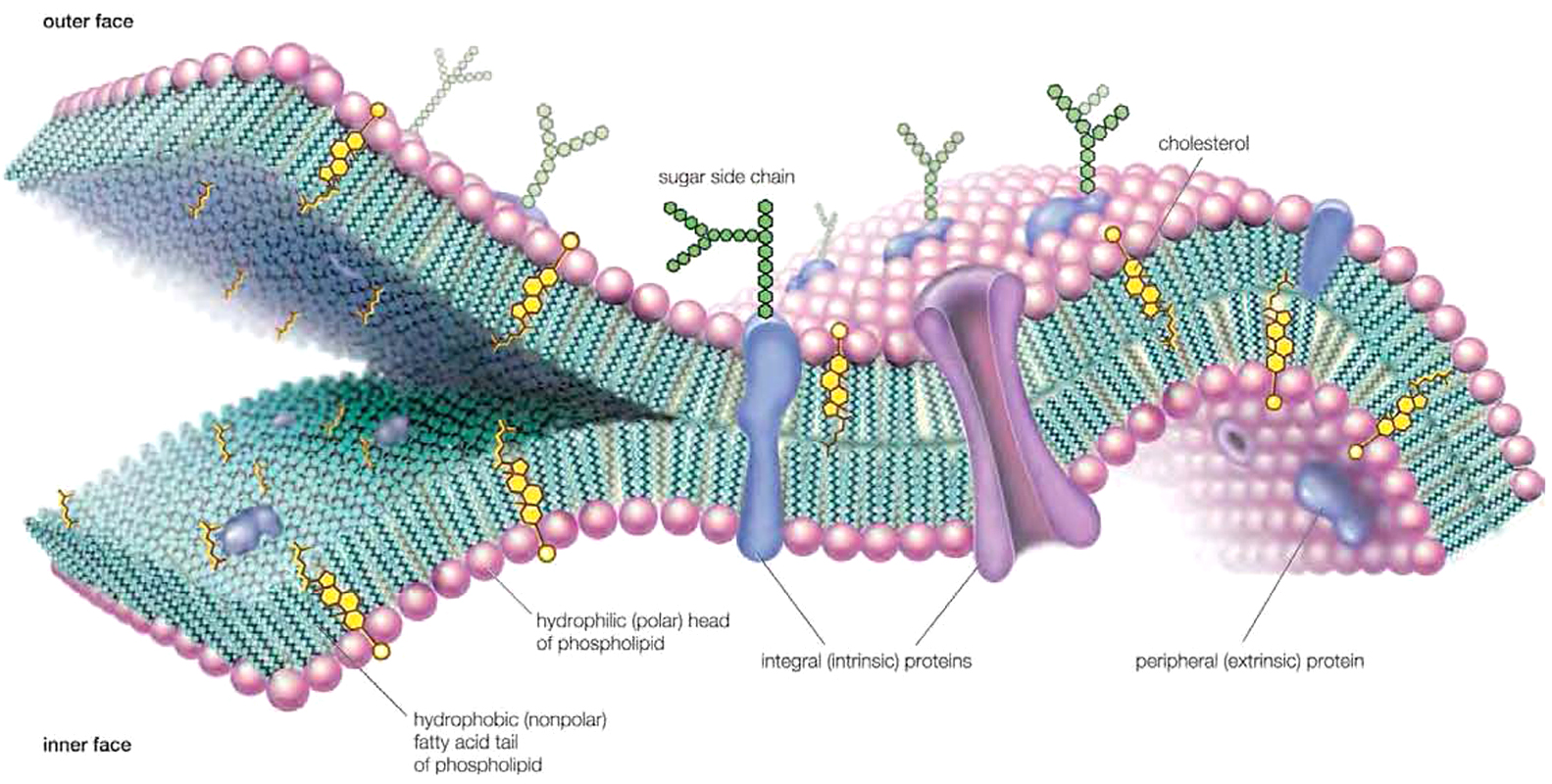
Though they are different in some significant ways, plant and animal cells also have many things in common. Plant and animal cells are both eukaryotic. Eukaryotic cells contain a membrane-bound nucleus and organelles. The nucleus contains the cell’s genetic material. Other cells, such as bacteria and archaea are prokaryotic, meaning that they lack organelles and a nucleus and their genetic material floats freely around the cell.
The organelles of eukaryotic cells are surrounded by membranes. These are like outer “skins” that filter material in and out of the organelles. Along with plants and animals, protozoa, algae, and fungi are all made up of one or more eukaryotic cells.

These side-by-side diagrams of a plant cell and an animal cell make it clear that the two kinds of cells contain many of the same organelles. blueringmedia/iStock/Thinkstock
THE COMMAND CENTER
The nucleus is the command center of the cell. If a cell were an airplane, the nucleus would be the cockpit where the pilot sits. Located near the middle of the cell, the nucleus stores genetic information known as deoxyribonucleic acid, or DNA. The nucleus is wrapped in a double membrane that has pores, or holes, that let the genetic information pass from the nucleus to the rest of the cell. It is the largest structure in most animal cells and is clearly visible in both plant and animal cells seen under a microscope. Inside the nucleus is a round body called the nucleolus. The nucleolus produces material known as ribonucleic acid (RNA) that is transported out of the nucleus to other parts of the cell.

All eukaryotic cells contain a nucleus. Inside the nucleus is a syrupy nucleoplasm that contains the threadlike chromatin, which contains the cell’s DNA. Encyclopædia Britannica, Inc.
The cell’s organelles are controlled by information generated in the nucleus. The organelles each have their own specific role in keeping the cell alive. Some organelles make products for other cells to use, while others deal with waste and building materials.
KEY ORGANELLES
Most of the cell is made up a jellylike substance called cytoplasm. The cell’s organelles float in the cytoplasm. A mesh-like network of fibers called the cytoskeleton crisscrosses the cytoplasm. It gives cells shape, anchors some organelles in place, and directs the movement of organelles. Because of its many varied functions, the cytoskeleton is often referred to as both the bones and the muscles of cells.
Ribosomes are tiny, round particles that synthesize proteins according to the instructions sent by the nucleolus. The proteins are then either used within the cell or exported outside of it. While ribosomes can be found scattered throughout the cytoplasm, they are often attached to the endoplasmic reticulum.
The endoplasmic reticulum (ER) is a network of membranous tubes and sacs. It twists through the cytoplasm from the cell membrane to the membrane surrounding the nucleus. The portions of the endoplasmic reticulum that contain ribosomes are called rough endoplasmic reticulum (RER). Areas of the network that do not contain ribosomes are called smooth endoplasmic reticulum (SER). The latter is predominant in cells involved in detoxification or in the synthesis and metabolism of lipids.

The Golgi complex, or apparatus, plays an important role in the modification and transport of proteins within the cell. Encyclopædia Britannica, Inc.
The Golgi complex, or Golgi apparatus, is a membranous structure composed of stacks of thin sacs. Newly made proteins and lipids move from the RER and SER, respectively, to the Golgi complex. The materials are transported inside vesicles formed from the ER membrane. At the Golgi complex, the vesicles fuse with the Golgi membrane and the contents move inside the Golgi’s lumen, or center, where they are further modified and subsequently stored. When the cell signals that certain proteins are needed, the latter are “packaged” by the Golgi for export—part of the Golgi membrane forms a vesicle that then buds off, or breaks away, from the larger apparatus. The vesicle may migrate to the cell membrane and export its contents via exocytosis or it may travel to an intracellular location if its contents are needed by the cell itself. Lipids are processed by the same methods.
Lysosomes are round organelles in the cytoplasm that contain enzymes. Lysosomes combat harmful substances and help digest food, though they are more common in animal cells than in plant cells. Normally, the lysosomes do not release enzymes out into the cell itself. However, if a cell becomes damaged, the skins of the lysosomes disappear, enzymes are released into the entire cell, and the cell digests itself. This process of cell death is called necrosis.
POWERHOUSES OF THE CELL
The large organelles that control cellular respiration for the cell are called mitochondria. During cellular respiration, glucose and oxygen react in the mitochondria to produce energy-storing molecules, known as ATP (adenosine triphosphate), that the cell needs to carry out its many functions. Because they are the sites of this important job, mitochondria are known as the powerhouses of the cell. Mitochondria are especially numerous in cells that use a lot of energy, such as liver and muscle cells.
Like the nucleus, the mitochondria have double membranes. The outer membrane is smooth, but the inner membrane has lots of wrinkles and folds. These wrinkles and folds increase the inner membrane’s surface area. It is on the inner membrane that glucose reacts with oxygen to produce the primary energy for the cell.

Mitochondria have inner and outer membranes, as well as their own DNA. The folds of the inner membrane are called christae, while the spaces within it are called the matrix. snapgalleria/Shutterstock.com
THE PLASMA MEMBRANE
Both animal and plant cells are surrounded by a plasma membrane, though that membrane itself is surrounded by a cell wall in plant cells. The plasma membrane serves as a protective coat. It also acts as a gatekeeper. It blocks some substances, but it lets others pass into and out of the cell. For example, the membrane allows the amino acids needed for building proteins and the carbohydrates needed for producing energy into the cell. The plasma membrane also regulates the amount of water inside the cell.

Some molecules can freely move across the cell membrane. Other molecules must cross the membrane through special protein channels. Encyclopædia Britannica, Inc.
The plasma membrane is made up of two layers of lipid molecules. These lipid molecules hold proteins in place. The areas where the proteins lie mark the actual entrance and exit of molecules into the cell. Different proteins act as pathways for different molecules.
Similar membranes surround all of a cell’s organelles. These membranes perform gatekeeper functions for the endoplasmic reticulum, the nucleus, the Golgi complex, and the mitochondria. Membranes divide regions of the cell into different compartments.